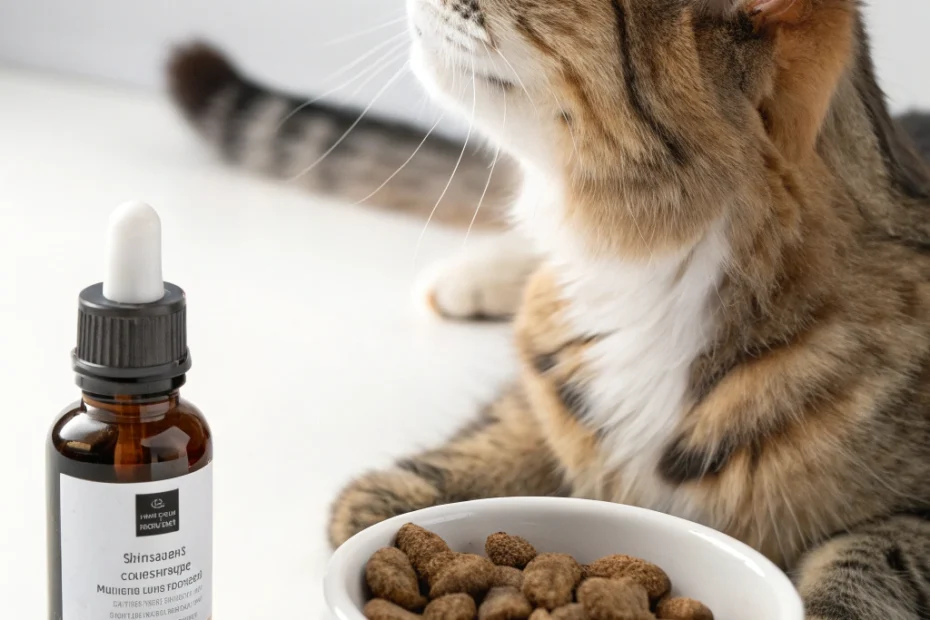At-a-Glance
Ringworm in cats is a common fungal infection that can affect your feline friend’s skin, fur, and claws. Despite its name, ringworm isn’t caused by a worm but by a group of fungi known as dermatophytes. Recognizing the symptoms early can help you manage the condition effectively and prevent it from spreading to other pets or humans.
Common symptoms of ringworm in cats include circular patches of hair loss, scaly or crusty skin, and broken hairs. You might also notice your cat scratching more than usual. While these signs can indicate ringworm, they can also be symptoms of other conditions, so it’s essential to consult with a veterinarian for an accurate diagnosis.
How to Choose
When selecting treatments for ringworm in cats, it’s crucial to consider several factors. First, consult your veterinarian to confirm the diagnosis and discuss potential treatment options. Treatments may include topical antifungal creams, oral medications, or medicated shampoos. Each option has its benefits and considerations, and your vet can help guide you to the best choice for your cat’s specific needs.
Consider the severity of your cat’s symptoms and any underlying health conditions. Some treatments may be more suitable for mild cases, while others are better for more severe infections. Additionally, think about your cat’s temperament and how well they tolerate different forms of treatment, such as baths or oral medications.
Safety & Setup
Ensuring the safety of your cat and other pets in your home is paramount when dealing with ringworm. Isolate the affected cat to prevent the spread of the infection. Clean and disinfect areas where your cat spends time, as ringworm spores can survive in the environment for months.
Use gloves when applying topical treatments or handling your cat to avoid spreading the infection to yourself or other animals. Regularly wash your hands and any items your cat frequently uses, such as bedding and toys. Keeping your home clean and your cat isolated can significantly reduce the risk of spreading the infection.
Core Pillars
The core pillars of managing ringworm in cats include early detection, effective treatment, and prevention of spread. Early detection involves recognizing the symptoms and seeking veterinary advice promptly. Effective treatment may involve a combination of topical and oral medications, depending on the severity of the infection.
Preventing the spread is crucial to protect other pets and humans in your household. This involves isolating the infected cat, maintaining a clean environment, and following your veterinarian’s treatment plan diligently. Regular follow-ups with your vet can help monitor your cat’s progress and adjust treatments as necessary.
Placement & Environment Tips
When dealing with a cat with ringworm, consider the placement of their living area. Choose a space that is easy to clean and disinfect, such as a bathroom or laundry room. Ensure the area is comfortable and has all the necessities, like food, water, and a litter box.
Minimize your cat’s stress by keeping their environment calm and quiet. Stress can weaken their immune system, potentially prolonging the infection. Provide plenty of enrichment, such as toys and scratching posts, to keep your cat entertained and reduce stress levels.
Comparison with Alternatives
When considering treatment options for ringworm in cats, it’s helpful to compare the available alternatives. Topical treatments, such as creams and shampoos, are commonly used for mild cases and can be effective when applied consistently. Oral medications may be necessary for more severe infections or when topical treatments alone are insufficient.
Natural remedies, such as apple cider vinegar or coconut oil, are sometimes suggested as alternatives. However, their effectiveness is not well-documented, and they should not replace veterinary-approved treatments. Always consult with your vet before trying alternative remedies to ensure they are safe and appropriate for your cat.
FAQs
What are the first signs of ringworm in cats?
The first signs often include circular patches of hair loss, scaly skin, and increased scratching. However, these symptoms can also indicate other conditions, so a veterinary diagnosis is essential.
Can humans catch ringworm from cats?
Yes, ringworm is zoonotic, meaning it can be transmitted from animals to humans. It’s important to practice good hygiene and handle infected cats with care to prevent transmission.
How long does it take to treat ringworm in cats?
Treatment duration can vary depending on the severity of the infection and the chosen treatment method. It can take several weeks to months for the infection to clear completely.
What to Do Next
If you suspect your cat has ringworm, the first step is to consult your veterinarian for a proper diagnosis and treatment plan. Follow your vet’s recommendations closely and maintain a clean environment to prevent the spread of the infection.
Monitor your cat’s progress and schedule follow-up appointments with your vet as needed. With the right care and attention, your cat can recover from ringworm and return to their happy, healthy self.
Disclaimer: Always consult your veterinarian for personalized advice regarding your cat’s health.
